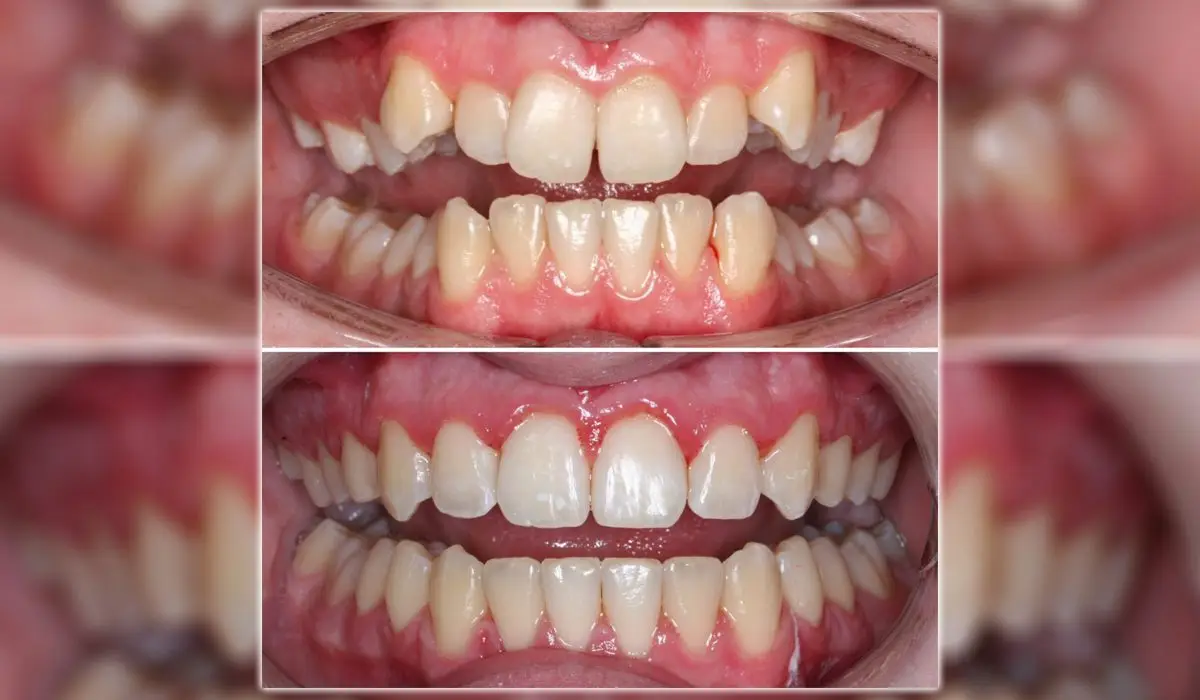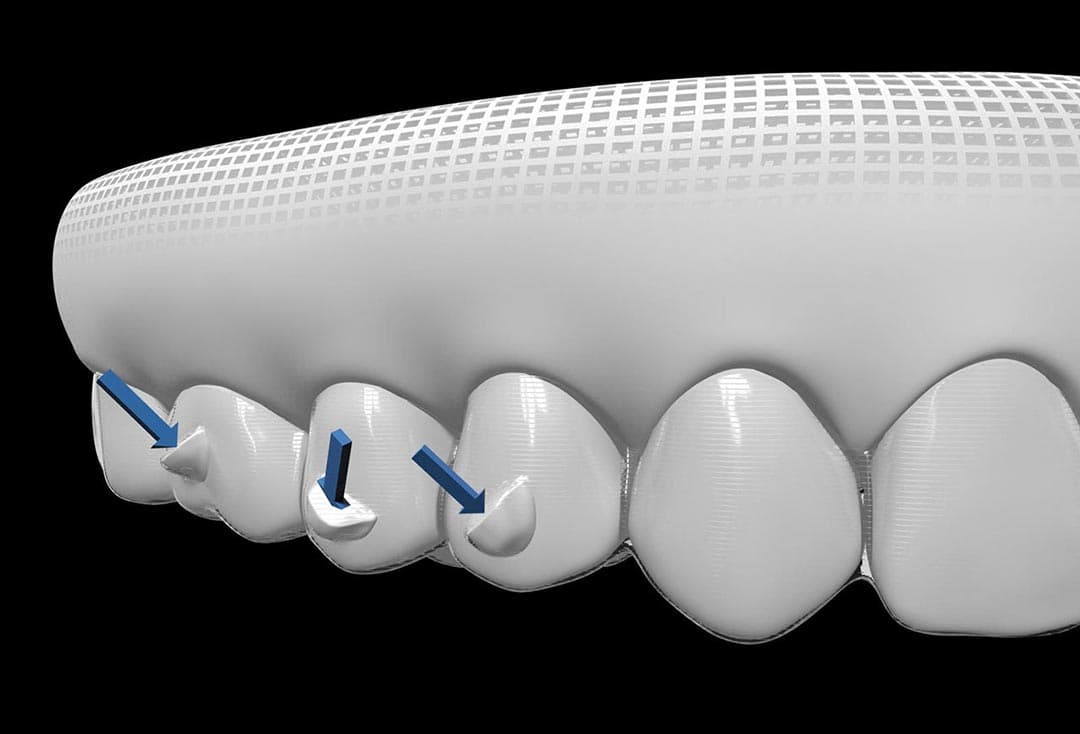Invisalign for Teens: A Modern Solution to Straightening Young Smiles
Invisalign for Teens: A Modern Solution to Straightening Young Smiles
Blog Article
Invisalign vs. Standard Braces: Which Option Is Right for You?
When thinking about orthodontic treatment, the option in between Invisalign and typical braces provides a number of vital variables that warrant mindful assessment. Invisalign provides a very discreet alternative with removable aligners, while typical dental braces provide an extra visible yet effective option for extreme misalignment.
Introduction of Treatment Alternatives

On the other hand, traditional dental braces are composed of steel braces and cables that are bonded to the teeth. This technique applies constant stress with time to attain positioning. While reliable for complicated orthodontic problems, typical braces require regular check outs for adjustments and can position obstacles in preserving dental health due to the trouble of cleansing about brackets and cables.
Both options have their benefits, and the selection often depends upon specific dental problems, lifestyle preferences, and patient conformity. Eventually, consulting an orthodontic expert is crucial for figuring out one of the most ideal treatment plan customized to individual demands. Understanding the subtleties of each option can dramatically affect the overall success of orthodontic treatment.
Aesthetic Factors To Consider
A considerable aspect influencing the choice in between Invisalign and traditional braces is the aesthetic allure each therapy uses. Invisalign aligners are crafted from clear plastic, making them virtually unseen when worn.
In comparison, typical dental braces contain steel braces and wires, which can be a lot more noticeable. While improvements in orthodontic innovation have actually brought about the development of smaller sized brackets and colored elastics, conventional braces still keep an even more conspicuous account. For some individuals, the visibility of dental braces may discourage them from looking for required therapy.
Eventually, the selection in between Invisalign and standard braces may hinge on individual preferences concerning looks. Clients that prioritize discernment often favor Invisalign, while those who are much less concerned regarding presence might choose conventional braces. Comprehending the aesthetic implications of each option is critical for making an educated decision that straightens with one's lifestyle and preferences.
Comfort and Convenience

In terms of benefit, Invisalign aligners are removable, making it possible for people to enjoy their preferred foods without constraint and maintain optimum oral hygiene. Brushing and flossing are simplified, as the aligners can be gotten throughout these routines, whereas standard braces call for cautious navigating around cords and brackets.
In comparison, typical dental braces require regular adjustments, making them much less convenient for those with hectic routines. In general, the comfort and comfort of Invisalign make it an attractive selection for many people seeking orthodontic therapy.
Therapy Duration and Effectiveness
While both Invisalign and standard braces work in correcting oral misalignments, the period of therapy can vary dramatically in between both alternatives. Commonly, Invisalign therapy can take anywhere from 12 to 18 months, relying on the intricacy of the case. The clear aligners work by progressively shifting teeth right into their preferred settings, and routine follow-ups with an orthodontist assistance guarantee progression remains on course.
In comparison, typical braces usually require a longer commitment, typically varying from 18 months to 3 years. This is because of their set nature and the usage of cables and braces, which can be much more efficient for extreme imbalances and complex instances (Invisalign). The treatment effectiveness of conventional dental braces is well-documented, as they enable accurate changes and better control over tooth movement
Eventually, the selection in between Invisalign and conventional dental braces may hinge on both the anticipated treatment duration and the specific dental issues at hand. Consulting with an orthodontist is important, as they can offer tailored referrals based upon specific requirements, guaranteeing the picked method straightens with preferred durations and outcomes.
Expense Contrast and Insurance Coverage Options
Cost plays a considerable role in the decision-making process for individuals taking into consideration orthodontic treatment, whether deciding for Invisalign or standard braces. On average, the cost of Invisalign ranges from $3,000 to $8,000, while standard braces normally cost in between $2,000 and $6,000. Aspects influencing these expenses include the complexity of the situation, Look At This the duration of treatment, and geographical location.
Lots of oral insurance strategies supply partial insurance coverage for orthodontic therapies, however the specifics can differ widely. great site Typically, conventional braces may be more frequently covered by insurance policy strategies compared to Invisalign, which some insurance companies categorize as an aesthetic procedure.
Furthermore, a number of orthodontic practices use flexible payment plans, making both therapy alternatives a lot more available. Patients must ask about potential financing options and price cuts for ahead of time settlements. Reviewing the total cost, consisting of insurance coverage benefits and layaway plan, is necessary for making an informed decision that lines up with both visual choices and budget plan factors to consider.

Final Thought
In summary, the choice between Invisalign and conventional dental braces rests on multiple factors, consisting of visual choices, convenience, treatment duration, and price. Invisalign offers a discreet, detachable option that facilitates oral hygiene and dietary flexibility, while typical dental braces may be better for intricate dental issues and commonly come at a lower rate factor. Eventually, appointment with an orthodontist is necessary to assess specific situations and establish the most appropriate therapy option for attaining optimal oral alignment.
When considering orthodontic therapy, the choice between Invisalign and typical dental braces presents a number of crucial variables that merit mindful examination.Contrasting Invisalign and standard dental braces discloses distinct therapy choices for orthodontic adjustment.While both Invisalign and typical braces are reliable in correcting oral imbalances, the duration of treatment can vary significantly in between the 2 options.Cost plays a significant click duty in the decision-making process for people considering orthodontic treatment, whether deciding for Invisalign or conventional braces.In summary, the choice between Invisalign and typical braces pivots on numerous aspects, consisting of aesthetic choices, convenience, therapy period, and cost.
Report this page